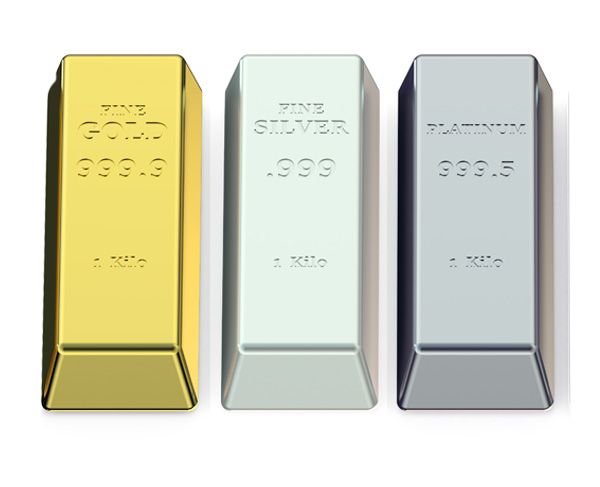How to Select Jewelry

Make the right choice.
Whether you’re looking for the perfect diamond, or having a necklace custom designed, we want you to have all the facts you need. It is important to us that you are happy with your purchase. Our most satisfied customers have built long-lasting relationships with their jewelers and come back for years to come.
Here are some questions you may want to ask your jeweler.
“Please describe the quality and cut of this diamond.”
There is skill required to provide accurate information about the cut and quality of a diamond, and it must be evaluated under magnification. Our jewelers can tell you the specifics of each stone, and what constitutes a fine make or a poor cut. For example, if a diamond has an extremely thick girdle, a jeweler can point this out to you, and explain that a well-cut diamond of the same weight would have a larger diameter and therefore look more impressive.
Find more tips on buying diamonds and gemstones.
“Is this piece suitable to withstand daily wear?”
Our jewelers can show you, under magnification, all of the important features of the jewelry you are considering. They can point out good and/or bad features regarding the setting, finish and overall workmanship of a piece. For example, if you are purchasing a ring for everyday wear, our jewelers can tell you which mountings are suitable for this use.
“Has this gemstone been treated?”
If you are not sure if a stone has been treated, or are even unsure about what this means, just ask one of our expert jewelers. They can tell you more than simply if a stone has been color- or clarity-enhanced or processed; they can tell you if a gemstone has been laser-drilled, irradiated, fracture-filled, or heat and pressure treated. In fact, our jewelers will disclose any known treatments without you even having to ask. Keep in mind that some treatments are now so sophisticated that jewelers can’t always be expected to identify them, so if our jewelers tell you that they do not know if a stone has been treated, it is an indication of honesty—not incompetence.
Other pointers when shopping for jewelry:
1. Diamonds are valued on the basis of their inherent characteristics, so consider generic as well as brand-name diamonds
2. Be sure to compare a range of qualities and styles before buying
3. Make pricing comparisons based on pieces of the same shape, size, color, clarity and cut. Mountings should be compared based on similar metal type, weight, setting style, and workmanship
4. Ask for a lab report for especially important purchases. This detailed report will give you an independent assessment of a stone’s color, clarity and proportions
5. Establish a relationship with your jeweler. He or she will not only look after your best interests, but can help you find items or deals you may not find on your own
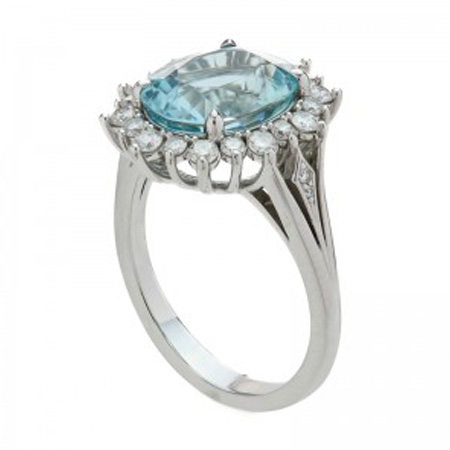
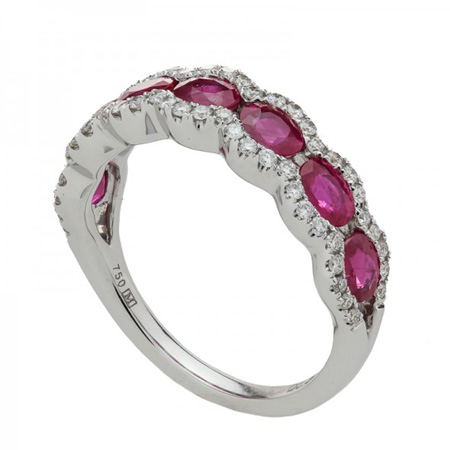
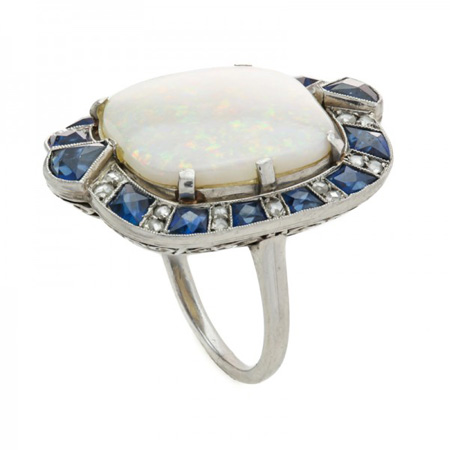
Choosing a Ring
When you’re looking for the perfect ring, it’s easy to be swayed by how pretty it looks in the jeweler’s display case. While that is certainly important, you should consider whether the ring is comfortable, well crafted, flattering to your hand and suitable for your needs. Also remember that it is a long-term investment. When choosing a style, ask yourself if you will still love it in ten or twenty years.
The following questions may help you when selecting your ring.
Is it flattering?
Be sure the ring is flattering to your hand and finger size. For example, if you have a small hand and short fingers, a huge, broad ring can make your fingers look too short and your hand too small. To make your fingers look longer, you might choose a mounting with stones arranged across or down the length of your finger. The key is to choose a ring size that is best proportioned and looks best on your hand.
Does it suit my needs?
Whether you are looking for an everyday ring or one for special occasions, here are some important things to consider:
1. Does the mounting have points or sharp edges that could cut you, or damage your clothing or furniture?
2. Is the ring easy to clean? This is especially important if you are looking for a ring for everyday wear.
3. If you will be wearing gloves, can you slip them on and off without damaging your ring or ripping your gloves?
4. Does the ring blend in well with your other jewelry (if you plan to wear them together)?
5. Can the ring be sized easily?
6. Does the ring stay in an attractive position when your hand moves? This can be affected by the mounting or sizing on the ring.
7. Does your jewelry tend to show a lot of scratches? If so, you may want to consider a ring with a matte or brushed finish.
8. Does the ring look attractive from more than one angle? Remember, you don’t just view your ring from the top.
9. Does the mounting style protect the center stone? This is especially important for everyday rings.
Is it comfortable?
1. Can you bend your fingers easily when wearing the ring? If you like the look of a broad ring, select a band that tapers to a narrow bottom so you can bend your finger freely.
2. Is the ring too tight or too loose?
3. Does the ring feel rough and scratchy? If so, it can usually be smoothed down by polishing
Is it well crafted?
1. Are the stone(s) set securely?
2. Does the inside of the ring look smooth and clean? Well-made pieces do not have rough finishes and jagged edges that can scratch you.
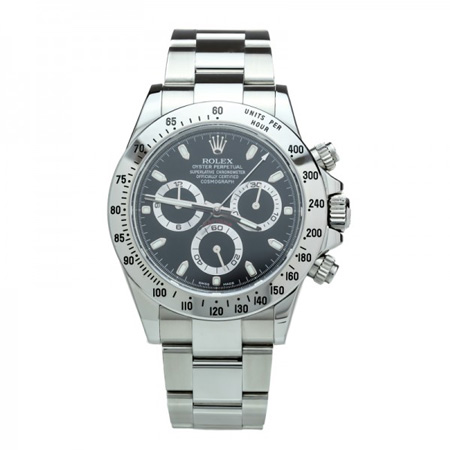
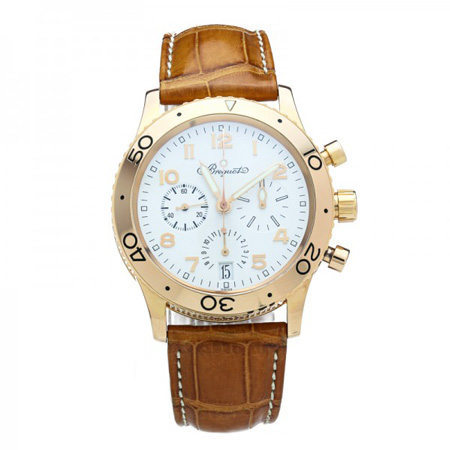
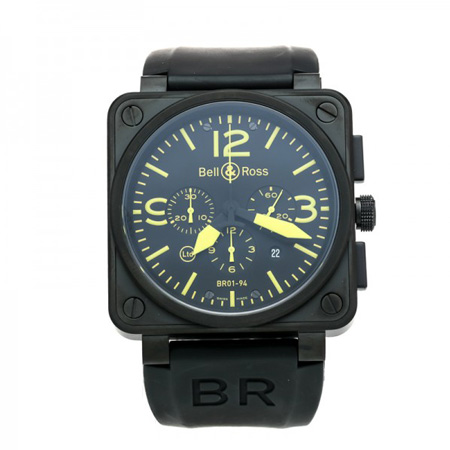
Selecting a Watch
Mechanical Watches
Mechanical watches are the traditional “wind-up” or analog watches with numbers or marked dials and moving hands. They are powered by a mainspring and operate via a series of interlocking wheels and gears. To set the gears in motion, mechanical watches must either be wound automatically or by hand. Since the mainspring of an automatic watch maintains full tension for a longer period of time than a hand-wound watch, it has greater consistency of power and, therefore, greater accuracy.
The moving parts or bearings of better-quality watches are usually called “jewels.”
Electronic Crystal Watches
An electronic quartz watch is a battery-powered watch that contains a tiny quartz crystal that vibrates to measure time. Usually the crystal is synthetic quartz and vibrates over 32,000 times per second. This high number of vibrations gives quartz watches extraordinary precision–many are capable of accuracy to within one minute a year. Quartz watches have fewer moving parts than mechanical watches and are less likely to break down over time..
Quartz Crystal Watches
The quartz digital watch displays time using numerical digits in an LCD (liquid crystal display) instead of moving hands. A battery causes the quartz to vibrate and a computer chip translates these vibrations into the display. These operate with the same accuracy as electronic quartz watches.
Water resistance
A watch should be marked “water resist” to confirm its level of resistance to moisture, as there are several degrees of resistance.
Common levels of water resistance:
Water resistant: It is wearable if water is being splashed, but it should not be exposed to any water pressure. It is protected from perspiration or accidental immersion in water.
Water resistance 50 meters (150 feet): It is wearable around household sinks, while playing sports, and in shallow water. It should not be worn while scuba diving.
Water resistance 100 meters (333 feet): It is wearable around household sinks, while playing sports, and while swimming or poolside diving. It should not be worn while scuba diving.

Buying Diamonds & Gemstones
Here you’ll find everything you need to know to find the diamond or gemstone that’s perfect for you.
image
Diamonds
Cut
Many gemologists consider cut to be the most important property to note when choosing a diamond. The cut of a diamond determines how it reflects light, which is responsible for its sparkle or brilliance. Diamonds can carry cut grades of Excellent, Ideal, Very Good, Good, or Fair.
Clarity
A diamond’s clarity is determined by the presence or absence of inclusions, marks that are often invisible to the naked eye. Fewer inclusions mean better clarity. The greater a diamond’s clarity, the greater its brilliance and value.
Color
Diamonds come in a wide range of colors; however, colorless diamonds have traditionally been considered the most valuable. Any diamond you buy should have a good balance of cut, color, and clarity, so as to impart the most brilliance and dazzle possible.
Carat
Although larger stones are often more highly valued, size should not be your only consideration when choosing a diamond. High brilliance, which varies according to clarity, cut, and color grade, is very desirable in a diamond.
Shape
Round. Emerald. Pear. Princess. Different shapes can emphasize a diamond’s many features. Choose a shape based on your personal taste and the design of the jewelry.
Care
It is a good idea to have your diamonds cleaned once a year by a professional jeweler, at which time the security of the setting can be checked as well. Diamond jewelry should be stored in a soft cloth pouch to ensure that the stone will not scratch other jewelry.
Certification
Diamonds purchased from a jeweler at the Jewelers Center can be certified by the Professional Gem Sciences Laboratory. A diamond certificate represents independent verification that the stone purchased has all the qualities of cut, color, clarity, shape, and weight expected.
Gemstones
Color
Jewelers describe the color of a gemstone in terms of three characteristics: hue, saturation, and tone. A gemstone’s basic color is its hue, and those with purer hues (for emeralds, green; for sapphires, blue; and for rubies, red) are generally considered more valuable. Saturation is a measure of the intensity or purity of a gem’s hue; value tends to increase with saturation. The tone of a gemstone is a measurement of its lightness or darkness.
Clarity
Like diamonds, most gemstones have inclusions, or tiny mineral flaws, that can be seen under magnification or by the careful eye. Be sure that any inclusions in the stone do not penetrate deeply into the gem, as this may cause it to break or crack.
Cut
The cut of a gemstone should be symmetrical in all dimensions so that it will appear balanced. If a stone is symmetrical, its facets will reflect light evenly, providing good brilliance.
Size
Although a gemstone’s weight is usually given in carats, this may not give an accurate idea of its size. Different types of stone have different densities. For example, a one-carat sapphire will be smaller than a one-carat emerald, though they have the same weight, because sapphires are more dense than emeralds. It is important to know the dimensions of a gemstone to ensure that the weight will be visible and well proportioned in the setting.
Care
Store your gemstone jewelry in a soft cloth pouch or jewelry case so it does not touch other pieces. As with all jewelry, normal wear and tear can loosen prongs and settings, so it is a good idea to have it evaluated by one of our jewelers, who can make repairs as needed.
Custom-made Jewelry
Are you looking to have a special piece of jewelry made—a one-of-a kind design that’s uniquely yours? Here is some advice to help you get exactly what you want:
1. Participate in the creation of your jewelry. It will mean that much more to you if you are involved, and be that much more unique
2. Remember that what looks good in a photo may not look or feel how you expect. Try on pieces that resemble what you want to have made
3. When describing the jewelry you envision, it is helpful to bring drawings, photos or models
4. Don’t assume your jewelry will be identical to a photo; however, it should have a close resemblance
5. If you want your jewelry to have any special features on the inside, be sure to tell your jeweler beforehand
6. While it’s best not to rush the creation of custom-made jewelry, be sure to work out an acceptable delivery date—and have it in writing
7. Ask for a written estimate of the cost of your jewelry. Your jeweler should obtain your permission before doing anything that would increase the estimated cost
8. If you are having a ring custom made, see if you can try on a wax model before casting. Make sure you’re happy with the height, width and comfort of the ring
9. Be sure you are familiar with the refund policy of your jeweler
10. Develop a relationship with a jeweler you can trust; this can make all the difference
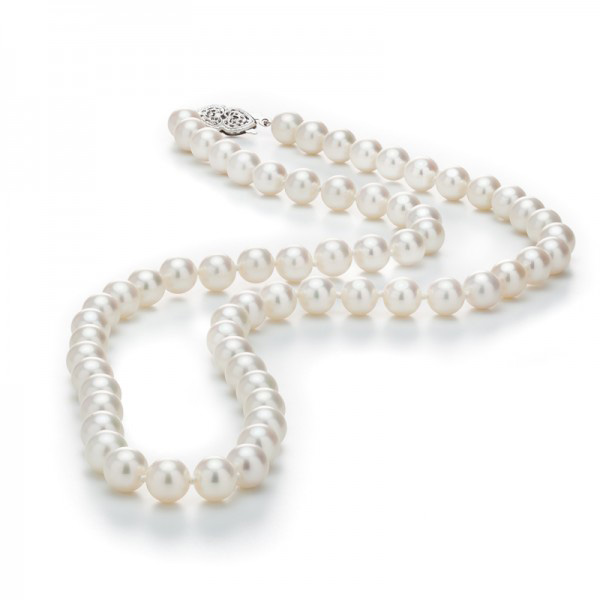
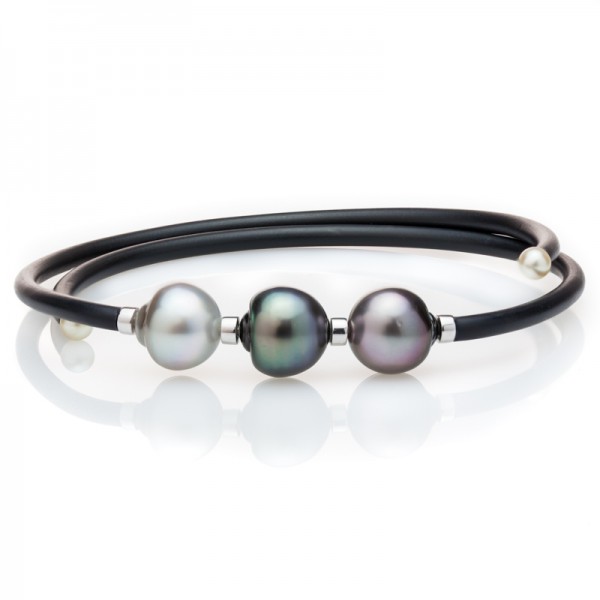
Pearl Types
The Jewelers Center offers much more than just diamonds. We sell, design, or repair just about any type of jewelry you’re looking for. Here you’ll find out how to choose pearls.
Cultivation
Pearls are produced naturally in the body of salt and freshwater mollusks, such as oysters and mussels. Because perfectly round, naturally produced pearls are so rare, a process known as cultivation was developed by Kokichi Mikimoto in the early 1900s.
Color
The general color of a pearl is also known as the body color. Pearls typically range from white, cream, and yellow to pink, silver, or black. An overtone of secondary color is sometimes seen. Color variation does not affect the quality of the pearl, though it should be noted that color matching is important when choosing pearls for some necklaces, earrings, or bracelets.
Luster
The appealing, deep shine of a pearl is often what defines its beauty. Luster is an integral feature in determining the quality of a pearl, and the difference is clearly visible to the untrained eye.
Shape
While pearls come in many different shapes, the rarest and highest-quality are round. When considering a pearl purchase, whether it be a necklace, bracelet, or earrings, look for consistency in the shapes of the pearls.
Size
Pearls come in a wide range of sizes. Round pearls are measured according to their diameter, while baroque pearls are measured by their length and width. A pearl’s size does not necessarily affect its quality, but it does affect its price. Large, round pearls are rare and their luster is usually high.
Below are some average pearl sizes (in diameter):
Akoya: 6-8mm
Freshwater: 5-6.5mm
South sea: 11-13mm
Tahitian: 11-12mm
Surface Markings
Like diamonds and other gemstones, pearls are rarely flawless. However, high luster or the way pearls are strung and set can help conceal surface markings.
Care
Pearls are soft and delicate, but when cared for with common sense, they will maintain their luster for centuries. Pearls should be stored in a cloth pouch or jewelry bag, separated from other jewelry to prevent nicks or chipping. Periodically, pearl strands should be restrung since the silk thread used to tie the pearls together breaks down over time.
Precious Metals
Gold
The purity of gold is measured in karats. Pure gold measures 24 karats but is too soft in this state to be used effectively in jewelry. That’s why gold is alloyed with other metals (such as silver, copper, nickel, and zinc) to increase its strength and durability. Common measurements (once the alloy is added) are 18 karat (75% gold), 14 karat (58%), and 10 karat (47.7%). In the United States, the legal karat limit for the metal to still be considered gold is 10 karats. A higher karat measurement in gold content indicates a greater value of the jewelry piece. Gold jewelry should always be stamped with the karat mark, either 18k, 750 (European marking for 18k), 14k, 585 (European marking for 14k), or 10k. In addition, to assure its quality, the piece should be stamped with the manufacturer’s trademark or country of origin.
Silver
Pure silver is soft and easily damaged. To give it more durability when creating jewelry, it is combined with copper, which makes it sterling silver. Sterling silver is 92.5% silver and 7.5% copper, but this alloy does not have an effect on the value of the metal. To ensure that the silver is high quality, jewelry should be stamped with a quality mark. According to federal law, the mark must be accompanied by a registered trademark or maker’s mark. Acceptable marks for silver include: sterling, sterling silver, ster, .925.
Platinum
Platinum is the most durable of fine jewelry metals. It does not chip or splinter easily, making it perfect for diamond and gemstone settings. Platinum jewelry is usually 95% pure platinum with 5% iridium or palladium alloy. It can also be 90% pure platinum with 10% iridium or palladium alloy. To guarantee its quality, each piece should be stamped with a 900 Plat to denote 90% platinum or a 950 Plat or Plat mark to denote 95% platinum. If platinum becomes scratched or a patina begins to develop, a jeweler can restore the original shine.
